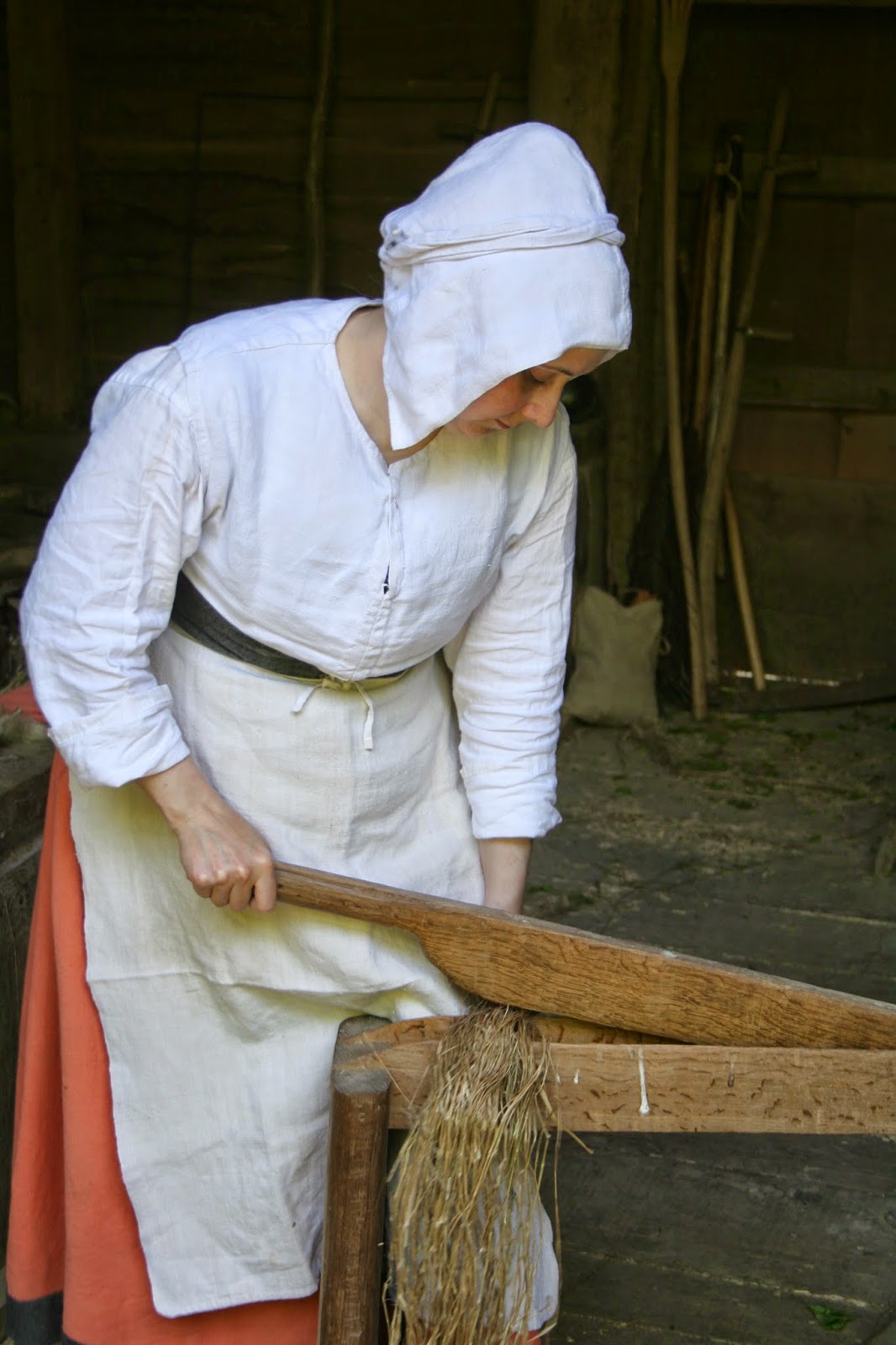Tuesday, 10 June 2014
The Nettle Experimant.
Well, The nettles came out of the retting bath yesterday.
My! Didn't they smell (like rotting seaweed).
I remember someone saying that they needed to be in there long enough for the leaves to come away easily. But, I could not put up with the smell any longer besides I live in a built up urban area and I do have my neighbours to consider.
They are now drying in the back garden.
Friday, 6 June 2014
Fibres from Nettles
Traditional Fibres from Plants
After working with flax for some years I hve started to do a more in depth experiment with nettles.
I love processing flax, it is a beautiful process.
Firstly the flax is pulled from the ground as the fibres we want run up the length of the stem, referred to as bast fibres. This method of harvesting preserves the length of these fibres.
Whilst it has these great fibres it also has a woody tubular core. This bit we do not require.
The flax is then bundled up and the retted. That means it is soaked in water to start the breakdown the bond between the woody core and the fibres to help with their separation later. There are different ways of achieving the same goal but this is how it is done here.
Once it has reached the right level of retting it is taken out of the water and dried thoroughly. This is to stabilise it for storage and to make the woody parts of the plant as brittle as possible.
When it is time to start processing you start with the breaker (above). This breaks up the woody parts of the plant. You insert your stems into this device and use a chopping action with the wooden guillotine.
The next is scutching. This beats and brushes away the woody parts of the stem. This was traditionally done on the scutching board with the flax knife. It is at this point it starts to look like flaxen hair.
Then it is heckling or hackling. Effectively you are combing the flax. This separates the fibres making them finer and pulls out the shorter and scruffy fibres, these are left behind in the combs. Starting with the coarse combs and working down to the finer combs.
To finally prepare the flax 'line' for spinning you repeatedly comb it with a very fine comb (I use a wool carder) and beat it to soften it.
Whilst you have this lovely strick of long straight flax you are also left with the tow. Tow is the mess left in the combs. This too can be spun and used. I love spinning Tow. Spinning any type of flax is better done with damp fingers.
Spinning flax 'line'
I have used nettles to make string for years. It is about now it is at its best for that. This is easy. Pull a nettle whilst wearing gardening gloves. Run your gloved had up and down the nettle stem a few times to neutralise the sting. The fibres, like flax, are on the outside of the plant. But, like flax there is an epidermis above this. During the beating of flax this comes off as dust. Flatten the nettle stem, this makes it easier to separate the fibres from the woody core. These can be twisted by hand into cord. These are still full of wet green organic matter that will dry and loosen the string very quickly. It can be dried for an hour in the shade to minimalize this. But, it is good for all sorts of jobs. This is the most basic way of utilising the fibres from a nettle.
I have started an experiment where I plan to process nettles like I process flax. I have noticed lovely fine white fibres coming away from the finished dried string. Also I have come across references to nettle cloth.
So Firstly I pulled these nettles. They grow everywhere and require no particular work as a crop!
I have built a temporary retting pond from an old paddling pool and placed the nettles in this to ret.
not pretty, but, a means to and end....
The nettles are submerged in rainwater from the water butt. They are held under the water with bricks and rocks. I have no idea how long this will take but they have only been in there 24 hours so far.
If the experiment works there will be very little yield in comparison to flax.
Subscribe to:
Comments (Atom)





